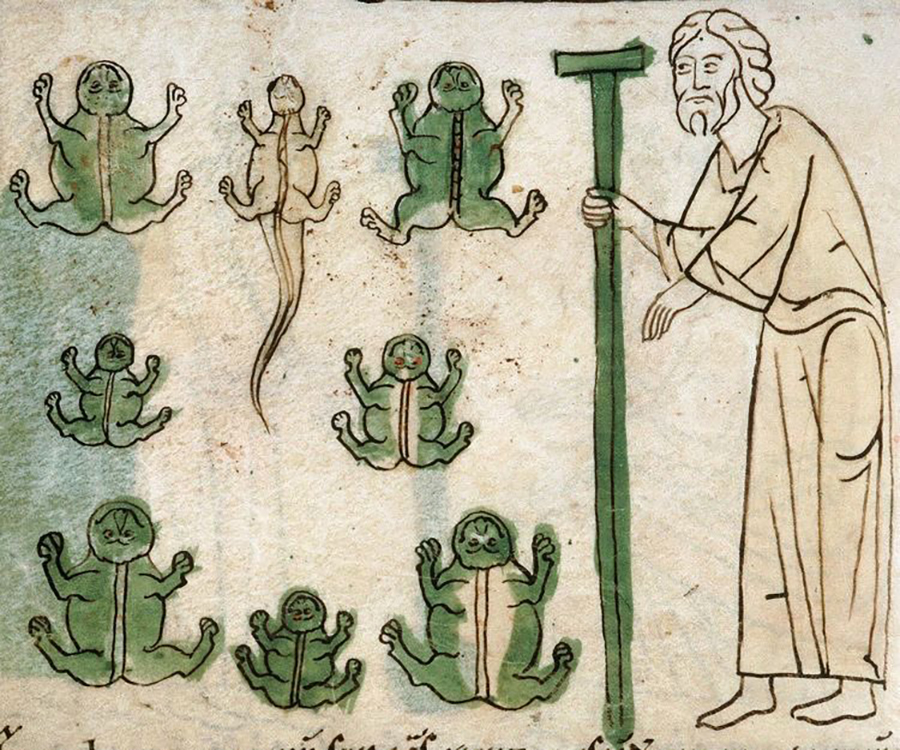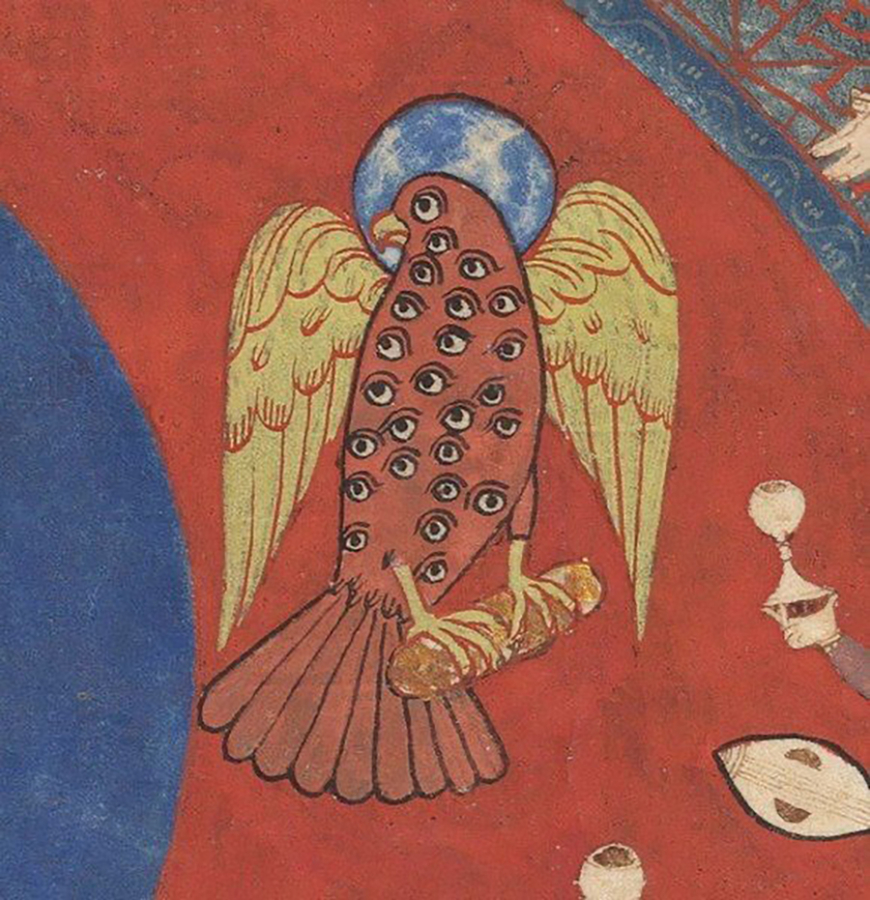With apocalyptic news updates and eerily personalized ads, social media platforms have lost the charm they once held—but perhaps not completely. One viral Twitter account is spreading joy through the unlikely source of European medieval art. The account, called Weird Medieval Guys, has over five hundred thousand followers, having more than quadrupled in growth in mere months. The account has brought centuries-old images, mostly from the marginalia of illuminated manuscripts, into the feeds of millions. Examples range from “extremely rotund hedgehog, italy, 14th century” to “crazy frog, france, 13th century” to “cat churning butter, germany, ca. 12th century” to “a boar wearing pants, france, 14th century.”
The humor of the account is that of the internet: it is niche, visual, a little self-indulgent. The images are also conscientiously cited with links to the source material: the British Library, the Albertina in Vienna, the Morgan Library and Museum, and others. With their frequent depictions of animals doing amusing activities, medieval images seem to anticipate internet culture. They suit today’s intensely visual form of expression.
Who is behind Weird Medieval Guys? The American Academy in Rome respects the creator’s desire to stay anonymous, but we can reveal she is a twenty-two-year-old Scottish woman who launched the account “purely for the sake of sharing with the world.” Born and raised on the internet (as all of Gen Z is), she has a passion for art history. She told us that her experience working as an intern digitizing historical photos in the archives of an American institution led her to appreciate the importance of uploading collections online to increase access. She spent a year sourcing images and poring over digitized manuscripts before posting the first tweet. It didn’t take long for the account to blow up.

Weird Medieval Guys and similar accounts (such as @medieval.psychedelia and @medievalmarginalia on Instagram) have attracted the notice of scholars, too, who welcome the attention to their discipline. “Medieval art can feel so distant, unapproachable, stuffy—the more we can break those barriers down the better,” said Denva Gallant, 2022–23 Rome Prize winner and an art-history professor at the University of Delaware who specializes in medieval art. She attributes the popularity of these accounts to the fact that the Middle Ages is “distant enough to feel weird, enigmatic, and yet we find some of our own behavior and impulses” reflected in its art. Larisa Grollemond, assistant curator of the Manuscripts Department at the J. Paul Getty Museum, echoed this: “The images are simultaneously strange and unfamiliar and also deeply resonant because of their visual appeal. You almost don’t need to have the context in order to map some emotion or get something out of it.”
The images that Weird Medieval Guys share bring up hotly debated scholarly questions. How creatively constrained were the artists? What is the relationship between the marginalia and the text? According to Gallant, in some cases the relationship is clear and the marginalia serve “to impart a lesson that perhaps is not explicitly rendered in the text.” Gallant pointed to the Hours of Jeanne d’Evreux (on view at the Cloisters). This book of hours features marginalia with sexual innuendo—seemingly scandalous considering the book’s devotion to the Virgin Mary. “These marginalia served as warnings to the young queen: remain faithful,” said Gallant. “Don’t do these illicit activities.”
Snails jousting knights are a recurring element—you could even say a meme—in manuscript illumination. The snails have long puzzled scholars. One camp, Grollemond said, sees the snails as a commentary on society, symbolizing social oppression or mocking courtly life. But Grollemond believes they could exist also as simple visual humor: “We’re supposed to think this is really funny because the snail is heavily armored and is a worthy opponent for a knight.” Of course, it’s possible that marginalia can operate on several levels: didactic and funny, satirical and weird.

European medieval art may reveal something about the nature of humor. In the same way a fourteenth-century viewer found “animals doing human things” funny, so do we today. These images, resonating over the centuries, provide a welcome interruption in our social media feeds: a moment of levity that is not too different from what medieval viewers experienced. “The world feels to many of us like it’s a darker place than it has ever been before in our lives,” said the creator of Weird Medieval Guys. “I’m glad to be offering people even a tiny bit of happiness every day.”
Follow @WeirdMedieval on Twitter to join the fun.